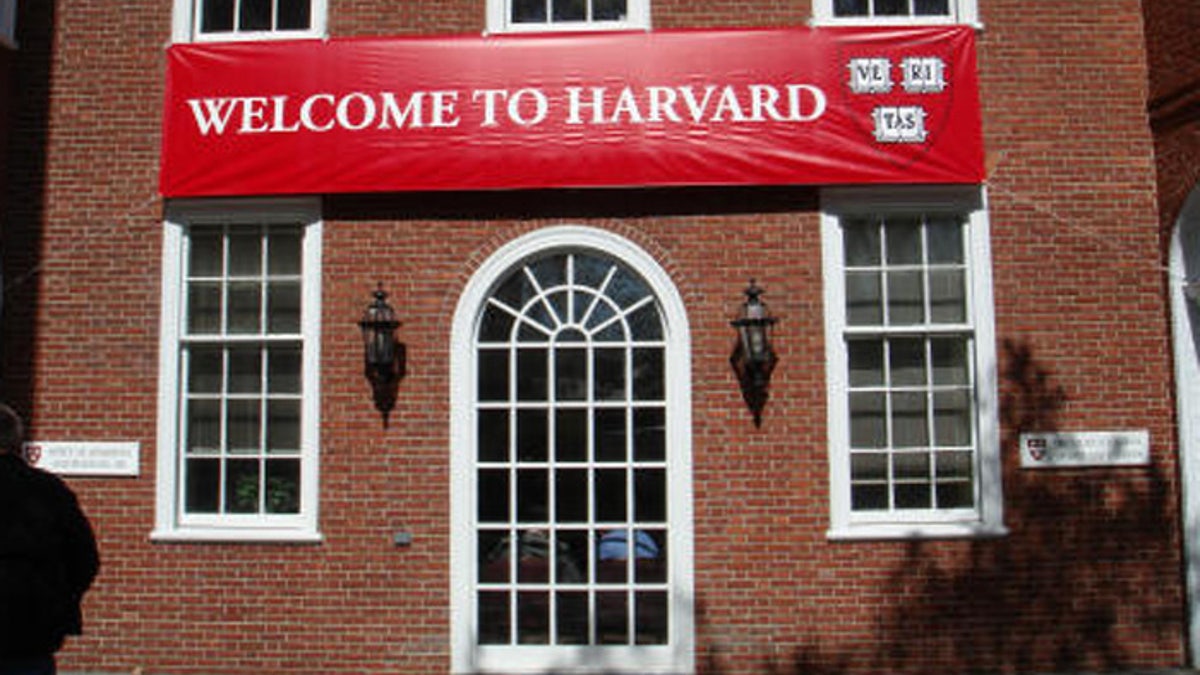
FILE -- Harvard University
Across our nation, outstanding students from families with low incomes approach college on a very different path than students from wealthier families. And in most cases, the bright low-income students are being kept out of America’s top colleges and universities by almost insurmountable obstacles.
A recent study by the Jack Kent Cooke Foundation, where I serve as executive director, is the first to comprehensively document these obstacles. Titled “True Merit: Ensuring Our Brightest Students Have Access to Our Best Colleges and Universities, the report found that a mere 3 percent of students at America’s most selective colleges and universities come from the 25 percent of families with the lowest incomes. In contrast, 72 percent of students at the schools come from the 25 percent of families with the highest incomes. The problem here: the rich aren’t necessarily smarter, they’re just getting breaks the poor aren’t.
Our study found that the few outstanding low-income students who make it into the top schools have proven they can succeed, with over 92 percent graduating with excellent grades. Many more low-income students are capable of doing the same thing, if only they could get in.
Students from upper income families now benefit from preferences in the college admission process that amount to affirmative action for the rich. As our report points out: “Access to our nation’s best colleges and universities is increasingly a function of wealth and station, not academic merit.” This is indefensible.
Here are six examples of affirmative action for the rich:
1. Over 80 percent of top colleges give an admissions preference to children of alumni, known as a “legacy preference.” This sharply increases the odds of admission for the sons and daughters of wealthy doctors, lawyers and business executives who graduated from elite schools. At Harvard, for example, 30 percent of the children of graduates who apply for admission are accepted – compared to just 6 percent of all applicants. Does anyone believe that’s fair?
2. Many selective colleges give preferential admissions to student athletes – not just football and basketball players, but students who play sports available almost exclusively to affluent white teens, such as crew, squash, sailing, riding and water polo. Yet recruited athletes on average have weaker academic records once they get into college. Many low-income teens don’t participate in high schools sports – or other extracurricular activities valued by college admissions offices – because they must hold jobs or care for younger siblings. Have we really gotten to the point where water polo prowess is deemed more worthy of college admission than caring for family?
3. Twice as many upper income students as low-income students take prep courses to boost their scores on the SAT and ACT exams, which play a major role in college admissions. Kaplan Premier one-on-one tutoring today costs $5,400. The prep courses, which are simply out of reach for poor teens, boost test scores significantly. In addition, affluent parents can pay fees so their children can take the exams several times, which gives these kids an advantage because they submit only their highest scores. Is this anyone’s definition of equal treatment?
4. Students from poverty are often ill-advised by high school counselors about college options. Counselors have huge caseloads, are often unaware that financial aid could actually make a private school less expensive than a nearby state school, and so don't encourage students from poverty to apply to selective schools because they seem unaffordable. Only 23 percent of high-achieving, low-income students seek admission to a selective school, compared with 48 percent of high-achieving students with higher incomes. And 84 percent of high-achieving, low-income students eligible for fee waivers for the Common Application used by hundreds of colleges fail to apply for the waivers. This is a case of ignorance beating ability.
5. Advanced Placement courses are more available in private high schools and in wealthy school districts than in ones where low-income students are concentrated. Many colleges give applicants artificially higher grade-point averages just for completing such courses. In other words, poor students have a maximum grade of 4.0 while the rich are working off of a 5.0 top grade. In other contexts we would call that cheating.
6. Colleges and universities often favor mediocre students who can pay all of the costs of attending. To lure such students, the schools sometimes give them “merit aid” that lowers their costs somewhat, leaving less money available for scholarships for low-income students. Only about 100 of the nation’s approximately 4,200 colleges and universities offer “need blind” admissions that don’t consider a student’s ability to pay at all. The rest acknowledge upfront that being able to pay matters; so much for any pretense of colleges judging applicants only on the merits.
To level the path to a higher education, our report calls on top colleges to remove some of the unfair barriers that outstanding low-income students now face in the admissions process. We call this a “poverty preference.”
We are not calling on the top schools to lower their standards and admit academically unqualified students from poor families. Instead, the schools should recognize that students who overcome the burdens of poverty and perform well despite having attended low-income high schools have shown they are special. To get high SATs and high grade point averages, they have had to be highly motivated, amazingly hard-working and extremely talented. These are precisely the type of students top colleges should admit, not the water polo set.
The bottom line is this: preferences in college admissions that favor the children of affluent parents keep too many outstanding students from poor families out of the top colleges that they are absolutely qualified to attend.
Every child who studies hard and gets good grades should have an equal chance to get a first-class higher education, regardless of income. The Cooke Foundation report presents a way to give bright low-income students the opportunities they richly deserve.








































